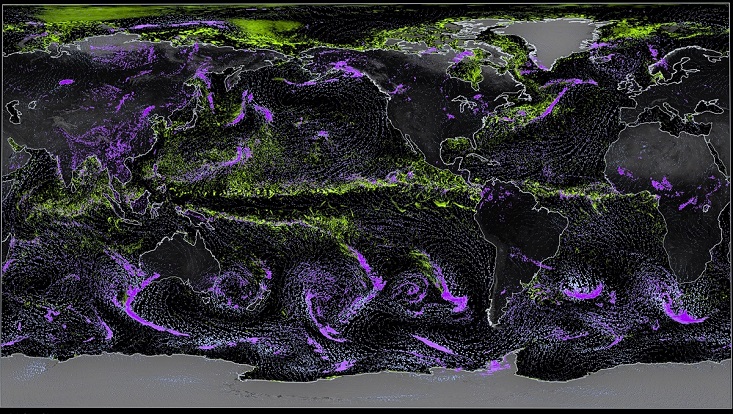The ocean is freshened by the atmosphere in the global storm resolving model ICON
Visualization description by Hans Segura and Marius Winkler (MPI-M): How do wind and precipitation impact salinity? The relationship could be simplified by saying that more precipitation indicates fresh water entering the upper ocean, and as a consequence, the ocean becomes less salty. This relationship is observed near the equator in the place known as the Intertropical Convergence Zone, where southerly and northerly winds converge, and precipitation occurs, pouring fresh water into the ocean. As this process takes place mostly throughout the year, the equator is characterized by persistent low salinity values. In the mid-latitudes, the freshened ocean is also evident: as the precipitation structures dance with the wind patterns, they leave a trace of yellow color throughout their eastward propagation, pointing out a less salty ocean.

The ocean is freshened by the atmosphere in the global storm resolving model ICON
The visualization combines precipitation, wind speed (with particles advected along the wind vector field) and ocean salinity anomaly. The salinity anomaly was computed with the help of a 7 day running mean.
Simulations: René Redler (MPI-M) and the ICON Sapphire modelling team
Scientific consultants: Cathy Hohenegger, Hans Segura (MPI-M), Nuno Serra (CEN/Universität Hamburg)
Special thanks: Uwe Schulzweida (MPI-M)
Title and descriptive text by Hans Segura and Marius Winkler (MPI-M)
